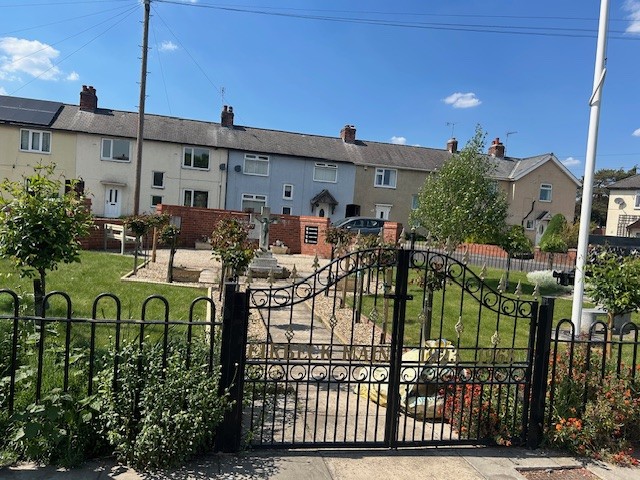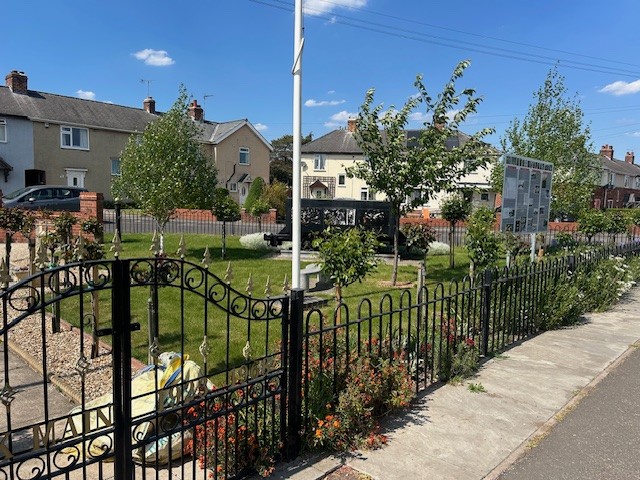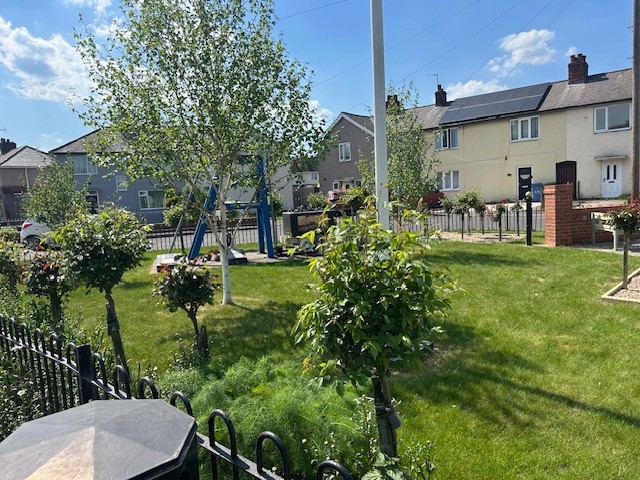Home
Hodsock Parish Council
Hodsock Parish Council covers the Ward Areas Langold and Hodsock with approximately 2100 electors.There are 12 seats on the parish council, covering the two Wards within the parish. The Council is called Hodsock, rather than Langold, because the original civil parish created in 1894 was Hodsock, Langold was built in the 1920s as a model colliery village.
The Parish Council owns and is responsible for Langold Cemetery, which opened in 1932. The Cemetery is the resting place to over 2000 former residents (please see the cemetery page for more information).
In 1973 the Parish Council purchased Langold Village Hall from Nottinghamshire County Council and in 2009 purchased the adjacent car park from Bassetlaw District Council. The building is ran by the dedicated Langold Village Hall Management Committee (please see the Village Hall page for more information). In 2024 the Parish Council recently benefited from Community Infrastructure Levy money from Bassetlaw Council, and invested this money restoring the flooring of the village hall, upgrading the IT facilities of the Committee room, a new Boiler and replacement roof, to help enhance and future proof the building for the benefit of local residents.
The Parish Council purchased the Firbeck Colliery Memorial Gardens from Bassetlaw District Council in 2017. This is looked after by dedicated local volunteers.
In 2025 the Parish Council joined the Nottinghamshire County Council Lengthsman scheme, receiving a grant towards the cost of appointing a Lengthsman, a self employed contractor who undertakes a variety of tasks around a parish, from litter picking, street sign/bus shelter, bench, cleaning and maintenance to the restoration and maintenance of the County Council owned communal flower beds and garden/open space areas around Langold. The Scheme also allows the Lengthsman to undertake handyperson work/maintenance on parish council assets and land.
FlyTipping - Please report all Fly-tipping direct to Bassetlaw District Council via the following link, who are responsible for it's clearance from the highways/verges link
Damaged Street Nameplates - Please report damaged or missing street name plates to Bassetlaw Council on the following link
Highways Issues - Nottinghamshire County Council - My Notts App - Please report all highways issues direct to Notts County Council, potholes, faulty/damaged streetlights, Road/Pavement damage or obstructions, dead animals in the road or on the pavement, damaged road signs, bus shelters, road markings, ovegrown trees into the highway, overgrown hedges onto pavements, overgrown or obstructed public footpaths, damaged styles, street light additionally you can download and report all these types of issues via the My Notts App - The MyNotts app has been developed to allow immediate access to the most popular Council services while on the move. Now, by having the MyNotts App available to download from the app store(s) on to both Android and iOS phones, it enables you to ‘report it’ ‘pay for it’ ‘apply for it’ and ‘find it’ on any smartphone and tablet.
Download the MyNotts app on the Apple App Store
Download the MyNotts app on the Google Play store
Planning Enforcement Breaches - Any breaches of planning should not be delayed in notifying Bassetlaw Planning Dept as they are the appropriate body to notify them to, please do not wait or inform the parish council of the issue, this only delays matters, breaches should be reported directly to planning@bassetlaw.gov.uk or by phoning 01909 533533 ask for Planning Enforcement. You need to send the address or What3Words location to Bassetlaw Planning together with a description of what the planning enforcement matter is.
Overflowing Public Waste/Dog Poo Bins - These all belong to Bassetlaw Council and should be reported directly to them to Environment.Services@bassetlaw.gov.uk or by phoning 01909 533 533 ask for Environment Services. You need to send the address or What3Words location to them, it is handy if you can email them a photo.
Any reported, but un-actioned Bassetlaw District Council issues, you can contact your local District Cllr who will help escalate the issue with the District Council.
Any reported, but un-actioned County Council issues, you can contact your local County Cllr who will help escalate the issue with the County Council.
County Council Highways Repairs Website: - NCC highways website was launched in 2023 https://www.nottshighways.co.uk/ The site allows residents to search across the county to find where resurfacing and patching schemes have taken place or are planned; just enter the area, postcode or street address to see works in any location. The site gives details of the various works and, in many cases, includes an image of the completed works. As a newly developed site, it covers improvements delivered since spring 2022 only; these include full resurfacing works, the ongoing programme of mechanised patching and other improvements such as microasphalt works. The site is also accessible through the MyNotts App, and is planned to be updated weekly.
Residents can continue to report highways issues for inspection and repair, by telephone to the NCC contact centre 0300 500 8080 or online at https://www.nottinghamshire.gov.uk/transport/roads/report-a-road-or-pavement-problem or by using the MyNotts app for mobile phones (download free). These three routes all create an immediate report for investigation by the highways teams. Members of the public should report all highways matters direct to the County Council this way, as soon as possible, not channel them in the first instance, via the parish council or wait and bring them up verbally at parish council meetings, all this does is delay matters, add extra levels of admin, when in many cases the item could have been sorted asap by the County Council.
Langold & Hodsock Villages
Langold is famous for its beautiful Lake and Country park. Langold Lake Country Park covers approximately 300 acres and features woodland, two large lakes, wildlife meadows, walkways and a variety of recreational areas. The park is popular with children, dogs, fishermen and bird watchers alike. As a 'model village' similar to Creswell (Derbyshire) and Manton (Worksop), Langold village contains numerous features of architectural and historical interest. Of particular note is the foundation stone of St Lukes Church on Church Street enscribed "To the glory of God. This stone was laid by Miss Mellish 25 June 1928". Also of interest are the 4 brick and tile entrance piers on Wembley Road, the piers built and road named as such in 1924 to commemorate the first FA Cup Final to be held at Wembley Stadium the previous year.
Hodsock Priory and gardens is at the centre of the 800-acre (3.2 km2) Hodsock Estate, owned by the Buchanan family since 1765. The farm is 700 acres (2.8 km2) and grows carrots, wheat, barley and sugar beet. There is 100 acres (0.40 km2) of managed woodland.
A 20 million gallon irrigation reservoir, constructed in 1997, covers 7.5 acres (30,000 m2). Carefully designed to blend with the landscape, the reservoir attracts wild waterfowl, including oyster catchers, great crested grebes and shelducks. Elsewhere on the estate, bird life includes little owls, kingfishers, kestrels, green woodpeckers hobbies, robins, wrens and long-tailed tits. Hedgehogs, foxes, moles, voles, shrews, water voles, rabbits and hares are common.
The house is not open to the public, but the gardens and woods open to visitors in February during the snowdrop season.
Hodsock Priory is an English country house in Nottinghamshire, 4 miles (6.4 km) north of Worksop, England, and 1-mile (1.6 km) south of Blyth. Despite its name, it is not and never has been a priory. Hodsock is renowned for its snowdrops in early spring.


